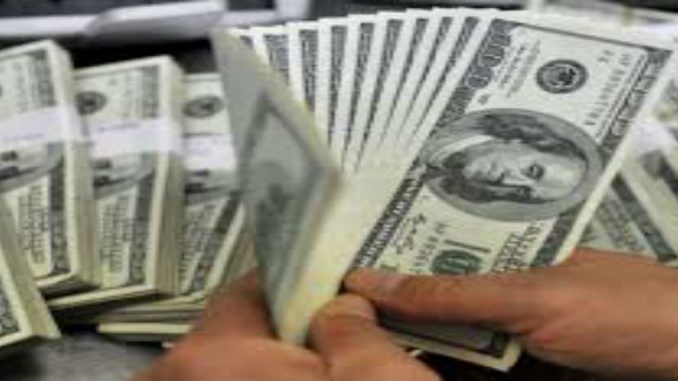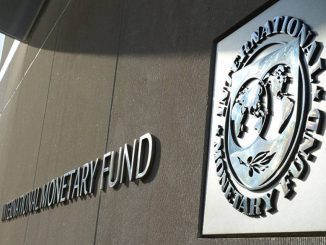
The Central Bank of Egypt (CBE) announced at the beginning of April that the Egyptian public debt has increased significantly.
The CBE’s statement showed that the size of Egypt’s foreign debt increased by $19.522 billion in 2016, recording $67.322 billion by the end of December 2016, compared to $47.8 billion by the end of December 2015.
In December 2016, foreign debt amounted to 37.6% of Egypt’s Gross Domestic Product (GDP) compared to 13.6% in December 2015.
In fact, the main reason behind this dramatic increase is the government expanding of its obtainment of direct foreign loans from several countries and international financing institutions, as well as its issuance of bonds in international stock markets during 2016 to bridge the gap in the general state budget.
Egypt’s Ministry of Finance issued on 10 November 2016 bonds worth $4 billion at the London Stock Exchange, with yields ranging between 4.62% and 7%, and maturity dates ranging from 10 December 2017 to 10 November 2028.
The ministry issued those bonds is to gather the amount of money needed for the reform programme approved by the International Monetary Fund (IMF) last year.
Last November,Egypt had the first the first tranche, worth $2.75 billion, from the IMF.
In addition, Egypt has also received $1bn from the World Bank, $500 million from the African Development Bank, $1 billion from the United Arab Emirates, and $ billion bn from Saudi Arabia, during 2017.
However, according to some experts Egypt’s national debt is more worrying than foreign debt. The national debt has hiked by 28.9% within a year, reaching EGP3.052 trillion , compared to EGP2.368 trillion a year before.
In this context, the executive chairperson of Union Capital Incorporated, Hany Tawfik, who stated that local debt is a vicious circle caused by the current budget deficit, said that national debt is far more worrying than debt received from international bodies.
He stated that, unfortunately, “the national debt reached a critical amount, where the government has to pay a lot of interest, which increases the budget deficit, hence leading the government to ask for more local loans.”
To fix the situation, the government has to increase its income of taxes through incorporating the informal sector into the formal economy, which would increase tax incomes to the right rate of 25% as many countries have.
Tawfik pointed that it might reach EGP1 trillion , instead of the current EGP 400-500 billion.
According to the CBE, the local public debt has increased to 94.1% of the GDP, estimated at EGP 3.245 trillion at the end of 2016.
He added that the main problem is that the government has a large number of employees, which would probably take a lot of time to reduce.
Furthermore, the CBE stated that Egypt’s debts to the Paris Club fell to $3.423 billion by the end of December 2016.
In January and July of every year, the CBE pays about $1.5 billion to the Paris Club in two installments annually.
However, last month, when the Governor of the CBE, Tarek Amer, was asked whether the CBE can pay its owed foreign debt—worth about $13 billion—in the current fiscal year (FY) 2017/2018, which he affirmed.
Amer seemed confident in the state’s ability to repay its foreign debt, pointing out that the CBE expects cash flows in foreign currency in the coming period, in addition to the current, strong reserve of foreign exchange, which would help Egypt repay its dues on time.
According to Amer, he CBE’s reserve of foreign exchange amounted to $26.5 billion at the end of February 2016.
He believes that his amount of reserve is very good and will be sufficient to repay the CBE’s dues, whether or not the bank received more foreign exchange.
According to the CBE, the net foreign investment increased by 29% in the fourth quarter of 2016 to reach $2.415 billion at the end of December 2016, compared to $1.872billion at the end of September 2016.
The foreign exchange flowing into the Egyptian market reached $3.981 billion in the fourth quarter of 2016, while outflows recorded $1.566 billion.
It is worth to motion that CBE announced that foreign investments in treasury bills increased to about EGP 10.157 billion in December 2016, compared to EGP 7.797 billion in November, while they jumped to about EGP 21.686 billion by the end of January.
Before January 2011, foreign investors were the fourth largest investors in the Egyptian treasury bills recording about EGP 56 billion in December 2010. But these investments fell to less than EGP 200 million before increasing again after the floating of the Egyptian pound on 3 November 2016.
However, the managing director of Multiples Group, Omar El-Shenety, has different and rather worrying thoughts regarding the increasing foreign debt.
He highlighted that the IMF expects that the foreign debt of Egypt will exceed $100 billion by the year 2020, explaining that the IMF does not even take into consideration the loans provided to establish local projects and institutions, such as the nuclear reactor of Dabaa, the power plants of Siemens, and military equipment.
According to Shenety, during the near future Egypt might fall into the trap of foreign debt, and it would easily exceed a rate of more that 150% of GDP, which is a very critical situation.
In addition, he believes that the rates of public debt are not worrying; yet it will reach the critical zone no matter what, because foreign debt is going to reach more than 50%.
He explained that the types of loans Egypt received are different, because international bodies provide loans with low rates and other international bonds with high rates.
“However, the main problem is not about the rates as such, but more about how the government will find sources of foreign currencies to pay back the main loans along with their interests,”according to Shenety.
He believes that any country in the world usually plans to increase its GDP to the point where the debt looks small in comparison, which is not guaranteed in Egypt’s case because the growth in its GDP is only slowly increasing.
Moreover, He explained that Egypt expected a growth rate of 6% in FY 2017/2018, and then decreased that expectation to 4.6%, which is probably not going to happen in reality, due to many factors, such as the situation of tourism and the political turbulence of the region.
Without the loans of other national projects and institutions, the current rate of the public debt compared to GDP is 130% now.
The IMF believes that within three years, the rate will reach 150%, again without the other loans to fund the national projects and institutions—which probably will push the total amount to exceed 160-170%. “This is a very high and dangerous rate,” said El-Shenety.
But El-Shenety believes that the interest rate of the loans represents approximately 35% of the budget, which is very high.
He also added that the government is working to reduce subsidies. As a result, the public debt is going to increase and, unfortunately, there are no other options because Egypt is committed to its deal with the IMF, which makes Egypt apply for more loans so that it does not have any sources to pay it back, he noted.
Although, Egypt’s military ruler,promised his people prosperity and stability under his reign.
However, he failed until now to fulfill his promises as the country has been facing one of the harshest economic downfall in its history under his rule.
Al-Sisi launched a bloody military coup against Egypt’s first democratically elected president Mohamed Morsi.
Under his reign, tourism and foreign investments, which were the two major resources of hard currency, have withdrawn as a result of political unrest and security instability.
As a result, the Central Bank of Egypt (CBE) devalued the Egyptian currency in March.
The devaluation of the Egyptian pound and the shortage of foreign currency have flourished the black market on the currency expense.
In this context, Abdel Fattah al-Sisi has chosen to take the Egyptian people through the hard path by seeking to secure a loan from the International Monetary Fund(IMF).
In this context, Egypt’ s al-Sisi has worked to fulfill the IMF economic reform program to secure the loan.
Last November, the International Monetary Fund’s executive board has approved Egypt’s request to secure $12 billion loan facility after Egypt met its requirements.
On August 30 Egypt started its first steps towards the loan when Egypt’s parliament approved a long-awaited law introducing a value-added tax (VAT) of 13 %, rising to 14% in the next fiscal year.
On November 3, the Central Bank of Egypt floated the Egyptian pound and gave up trying to peg the currency to the US dollar allowing it to devalue by almost half.
On November 4, Egypt took another unprecedented decision, which has always been abandoned by former leaders in fear of public unrest, to cut subsidies for fuel leading to jump in prices, in addition to the introduction of the value-added tax to raise revenues.
Abdel Fattah al-Sisi has said before that he would not hesitate “for one second” to take the difficult steps necessary to ensure Egypt lives within its means.
In this context, last December Al-Sisi asked the Egyptian people to endure hardships and austerity for the next six months.
It is worth to mention All Egypt’s presidents tend to avoid these economic measures of the IMF recalling poor Egyptians riot when President Anwar Sadat removed them on flour, rice, and oil in 1977, part of an effort to secure IMF-backed financing.He reinstated later from the decision. Though Egypt has returned to the IMF virtually every decade since the 1970s, implementation of reforms has been mixed.



